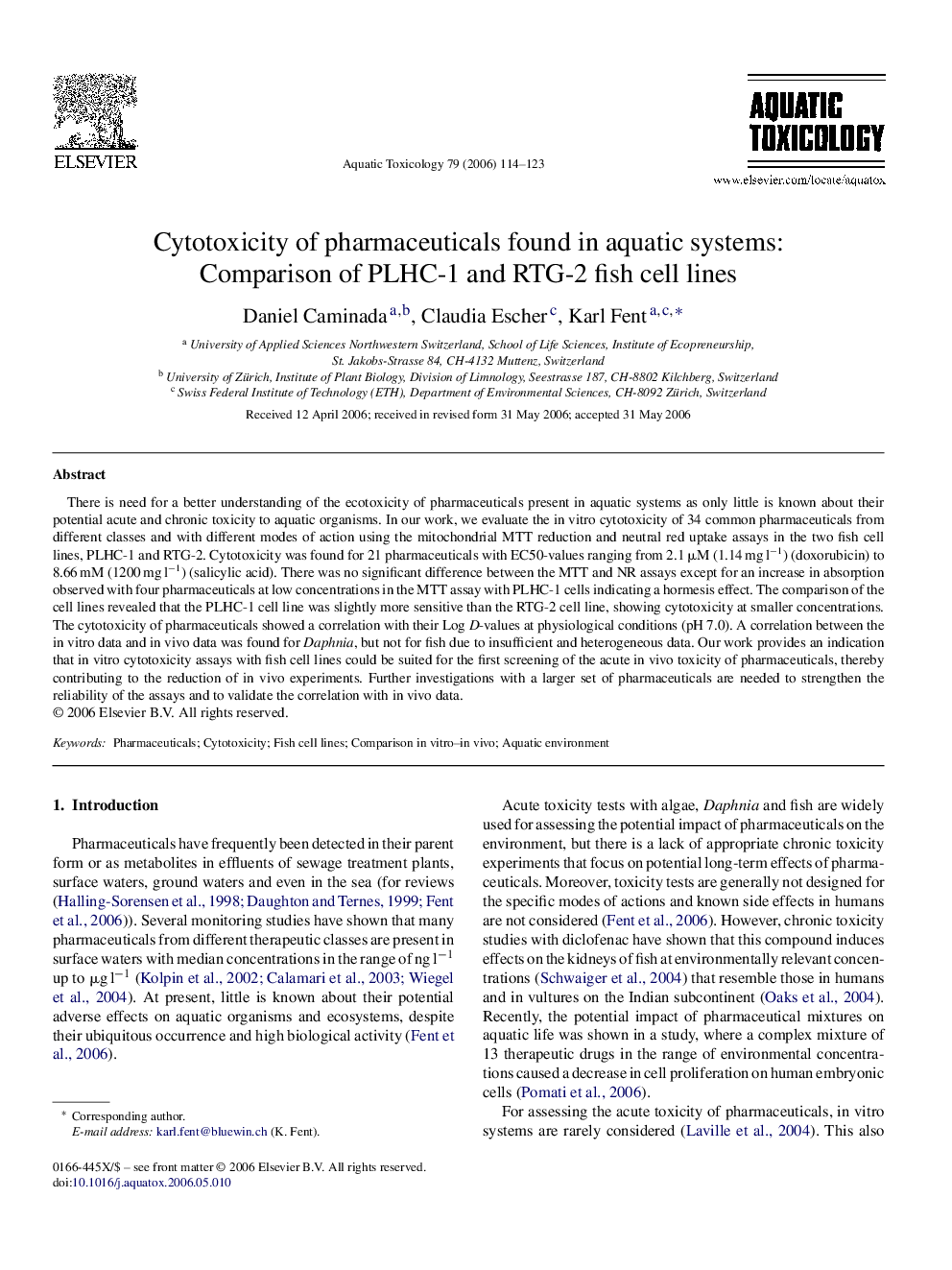| Article ID | Journal | Published Year | Pages | File Type |
|---|---|---|---|---|
| 4531304 | Aquatic Toxicology | 2006 | 10 Pages |
There is need for a better understanding of the ecotoxicity of pharmaceuticals present in aquatic systems as only little is known about their potential acute and chronic toxicity to aquatic organisms. In our work, we evaluate the in vitro cytotoxicity of 34 common pharmaceuticals from different classes and with different modes of action using the mitochondrial MTT reduction and neutral red uptake assays in the two fish cell lines, PLHC-1 and RTG-2. Cytotoxicity was found for 21 pharmaceuticals with EC50-values ranging from 2.1 μM (1.14 mg l−1) (doxorubicin) to 8.66 mM (1200 mg l−1) (salicylic acid). There was no significant difference between the MTT and NR assays except for an increase in absorption observed with four pharmaceuticals at low concentrations in the MTT assay with PLHC-1 cells indicating a hormesis effect. The comparison of the cell lines revealed that the PLHC-1 cell line was slightly more sensitive than the RTG-2 cell line, showing cytotoxicity at smaller concentrations. The cytotoxicity of pharmaceuticals showed a correlation with their Log D-values at physiological conditions (pH 7.0). A correlation between the in vitro data and in vivo data was found for Daphnia, but not for fish due to insufficient and heterogeneous data. Our work provides an indication that in vitro cytotoxicity assays with fish cell lines could be suited for the first screening of the acute in vivo toxicity of pharmaceuticals, thereby contributing to the reduction of in vivo experiments. Further investigations with a larger set of pharmaceuticals are needed to strengthen the reliability of the assays and to validate the correlation with in vivo data.
